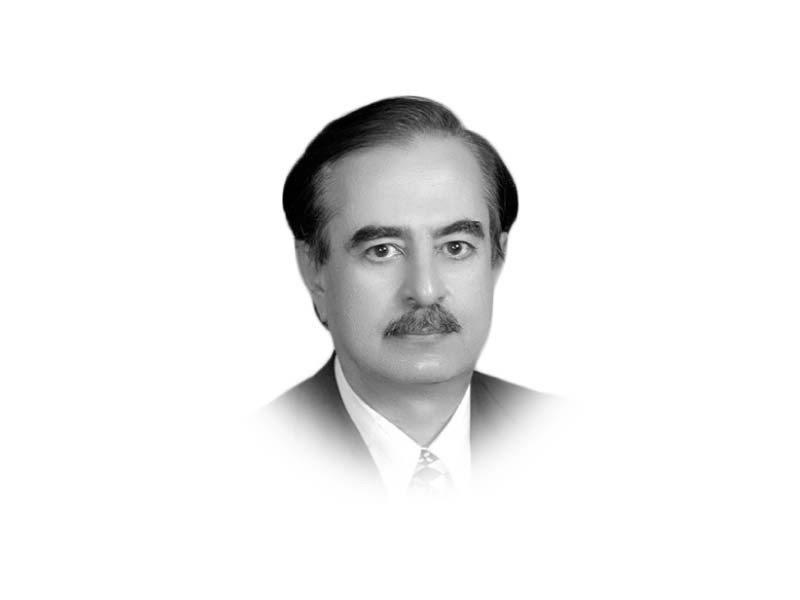
It may seem outré: something in our psycho-historical and mental configuration places us in the sphere of an epicurean, consumerist society, public policy in tow with its peculiar economic consequences. Even though conspicuous consumption tends to increase with wealth to elevate status and power, evidence exist that even at the lower end of the income ladder parsimony is uncommon.
Some odd facts appear regarding issues of incomes, savings and consumption at the individual and collective levels. One of these may be thus explicated.
According to recent World Bank estimates, 40% of Pakistan’s population lives below the poverty line ($2.50 per person or Rs700 per day, calculated at US dollar equal to Rs280.25). Later estimates (FAO) place the poverty line around $3.016 or about Rs845 per day. On this basis the average monthly income of the poor ranges between Rs21,000 to Rs26,000 per month.
On above mentioned World Bank assessments, nearly 96 out of 240 million people live on subsistence level with most of their income being spent on the barest items of food, clothing and shelter, supplementing their incomes with those of joint family members engaged on meagre irregular jobs. Misfortunes like a major ailment or bereavement necessitates a loan, which in the rural areas often leads to bonded labour.
But the phenomenon of living beyond means becomes evident when one considers that there are nearly 194 million mobile phones in Pakistan or 80% of the total population. This leads to the curious conclusion, ceteris paribus, that of the 96 million population living below the poverty line, more than half possess cellular phones although bereft of basic necessities of life!
Pakistan has the rare distinction of being the 7th largest market for cellular phones in the world. Although 21.28 million mobile phone sets were manufactured domestically in 2023 and only 1.58 million imported, the local industry mostly consists of ‘assembly’ of imported parts. Due to lack of a serious government driven ‘deletion’ programme and ‘indigenisation’ of IT & C sectors, sizeable rare foreign exchange is expended upon import of electronic parts manufactured abroad.
During the seven-month period of July 2023 and Jan 2024, a total of $987.50 million of cellular phone parts were imported which converts to roughly $1.8 billion imports annually against an export of only $150 million. Only 250,000 phones were exported.
During the same period out of a production worth $44 billion, India exported mobile phones worth $11 billion or nearly 25% of the total output.
Another area where much better results were possible relates to motor vehicle (MV) production. Cars are the 8th largest imported product and Pakistan is the 65th largest world importer. In 2023 Pakistan produced a total of 15.597 million motor vehicles (cars, motorcycles, trailers, rickshaws, etc) but most of these were in the form of assemblage from parts imported with negligible domestic contribution from locally manufactured parts — the deletion policy having found little headway over the last three to four decades.
During 2022 Pakistan imported cars worth $1.26 billion but exported vehicles only to the tune of $1.54 million. During 2022-23, India exported 4.285 million cars out of a total production of 56 million, for a sum of $6.68 billion, ranking as the 23rd largest car exporter in the world.
Although economies of scale are relevant, government policies regarding ‘deletion’ and ‘indigenisation’ play an important role that has been found wanting.
A view persists, mostly led by IMF et al, that import constriction, in a growing economy, without regard to its peculiar features like preponderance of investments in consumption based industries rather than high value added, productive goods adversely impacts domestic economic growth.
A State Bank Research Bulletin Study 2014, examining the ‘Share of Imported Goods in Consumption of Pakistan’ (Amjad Ali Vol No: 1, 2014) showed that out of the total imports of Rs1770.39 billion in 2005-06 (roughly $29.5 billion calculated at the then prevalent rate of Rs60 per dollar), imports worth Rs1313.98 (or $22 billion), or 74% of all imports, were brought in for consumption purposes. Only Rs456.41 billion ( $7.66 billion), or 26% of imports were used for investments and inputs leading to incremental growth.
Pakistan’s economy is highly skewed towards consumption which forestalls and militates against export- oriented, high value added growth. Most investments occur in speculative and consumption goods with niggardly scope for upgraded products such as engineering and mechanical products, IT, value added agricultural goods, etc.
The above-mentioned study showed that on the basis of the Bureau of Statistics Census of Manufacturing Industries (CMI) 2005-06, which can fairly be extrapolated to the latest CMI 2015-16, the ratio of imports used for ‘investment purposes’ stood at 18.37% and only 7.41% of all imports contributed to ‘value added’. In other words the ratio of imports that are used for consumption purposes is a whopping 74%.
CMI 2015-06 yet again establishes the distinct underlying trend of the economy towards consumption and low-growth productivity in the manufacturing sector. According to CMI 2015-16, food, beverages, tobacco products, wearing apparel made up 48% of GDP in weighted terms. Pharmaceuticals, rubber and plastic products, electronic goods, mostly mobile phones, motor vehicles and trailers, which also fall in the consumer category, constituted another 13%. If petroleum products, chemicals and chemical products are also reckoned as semi-consumer goods, these constituted 16.6% of the GDP in weighted terms. The results based upon both the CMI 2005-06 and CMI 2015-16 show that nearly 74-77% of all imports and about the same range of the manufacturing sector are dedicated to consumption and a mere 26% of imports and investments are directed to genuine economic growth.
No wonder that the property sector, speculative investments in gold, dollars, stocks, under-invoiced imports and tax exemptions occupy such a high place in the economic sphere, strung like a millstone around the neck of the economy disallowing unshackling from permanent external dependence.
Incomes, savings and consumption require a fair balance for growth and prosperity. Policies that incentivise, through monetary and fiscal measure, savings and investments towards high value added, export oriented sectors, away from a predominantly consumerist economy, are prerequisite.
Published in The Express Tribune, April 25th, 2024.
Like Opinion & Editorial on Facebook, follow @ETOpEd on Twitter to receive all updates on all our daily pieces.













1714800800-0/SLB-(1)1714800800-0-270x192.webp)

























COMMENTS
Comments are moderated and generally will be posted if they are on-topic and not abusive.
For more information, please see our Comments FAQ